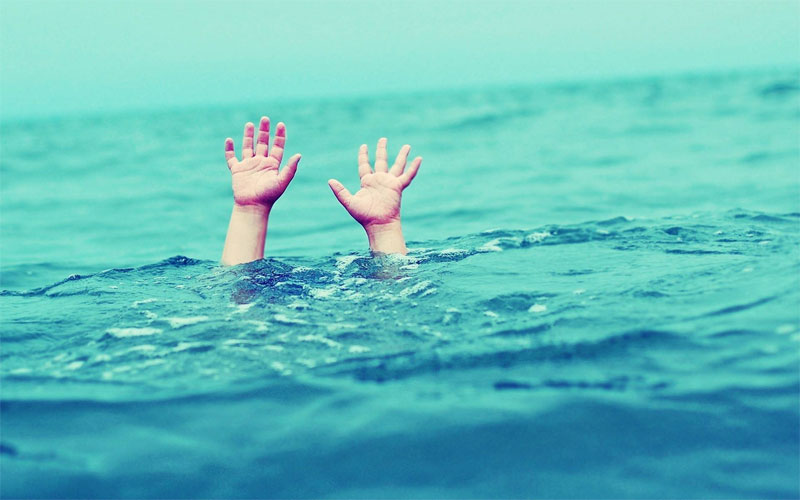First aid when drowning
When detecting a child drowning, quickly remove it from the water in any way, placing it in a well-ventilated and warm place; If the child is unconscious, check if the breathing is still not done, otherwise perform CPR.
Every year, in summer, many young children drown when swimming in the sea or in the lake. Recently, noon April 15, 9 grade 6 boys in Quang Ngai drowned when bathing in Tra Khuc river.
Doctor Nguyen Tien Dung, Pediatrics, Bach Mai Hospital said, drowning is a form of asphyxia , due to water being inhaled into the lungs or obstructing airway due to laryngospasm when the victim is in the water. When the person suffocates, the victim stops breathing, the heart beats slowly. Apnea continues to lead to hypoxia, an increase in heart rate and blood pressure. The end result is slow heart rate, arrhythmia, cardiac arrest and death.
When drowning, the likelihood of death is very high or can leave sequelae of severe brain damage. However, if the victim is given first aid, positively and properly, he or she can be saved. Therefore, proper emergency management in this case is very important.

Every year, in summer, many young children drown when swimming in the sea or in the lake.(Artwork: News).
Dr. Dung instructed the first aid to drowning victims as follows:
Step 1 : Quickly take the victim out of the water in any way.
Step 2: Let the victim lie in a well-ventilated and warm place. If the victim is unconscious, check if the breathing is still possible by observing whether the chest is movable.
If the victim shows signs of apnea, quickly administer artificial respiration: Place the victim on his or her neck and tilt to the left, use a cloth or cloth to clean the mouth, nose or mouth and nose multiply. Next, emergency personnel need to carry the breath inhaler to the victim. After 5 times of artificial respiration when the pulse is taken, but the heart still stops, the next step is to force the heart outside the chest.
Step 3: After the artificial respiration but the circuit still stops beating, emergency personnel need to carry out heart compressions outside the chest. If the heart fails to show that the heart has stopped beating, artificial respiration should be accompanied by extracorporeal compression of the heart (pressed at the left half of the sternum) according to formula 15: 2 (ie, 15 heart compressions). if you have 2 people, or 30/2 if there is one person. Be persistent until the pulse and victim breathe again.
Step 4: After the provincial victim will vomit a lot of water so they should be placed in a recumbent position, heighten the knees on the shoulders, extend the clothes to avoid suffocation.
Step 5 : After the first aid, the person who drowned has regained consciousness, needs to be taken to a medical facility for examination, to see if the victim has acute pulmonary edema. They need to dry their bodies, change clothes and warm them up, then quickly take the victim to the nearest medical facility so that the doctor can handle the next steps.
Note:
- Do not overturn the drowning victim, carry it over your shoulder and run.
- Without CPR and chest compressions when transporting victims to the hospital will cause emergency time, there is a risk of causing later brain sequelae if the patient is alive.
Doctors recommend that parents and teachers should not let children play alone without adult supervision . Keep water jars closed around the house, do not let children play near ponds, it is best to teach children to swim to avoid unfortunate accidents.
- Why are people drowning after going to shore?
- Warning of the risk of 'drowning', absolutely not subjective
- How to save suffocated people
- Help your child prevent and respond to drowning accidents
- Why are men more likely to drown than women?
- Two ways to escape drowning when you can't swim
- Necklace puffs up to save lives
- Discovered the unique ability of bees to save themselves from drowning
- 4 things to remember before jumping down to save drowning people
- She rescues the victim with a head injury, fainting, drowning and a bite
- Robots rescue drowned people
- The startling truths you need to know before swimming
 Green tea cleans teeth better than mouthwash?
Green tea cleans teeth better than mouthwash? Death kiss: This is why you should not let anyone kiss your baby's lips
Death kiss: This is why you should not let anyone kiss your baby's lips What is salmonellosis?
What is salmonellosis? Caution should be exercised when using aloe vera through eating and drinking
Caution should be exercised when using aloe vera through eating and drinking